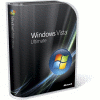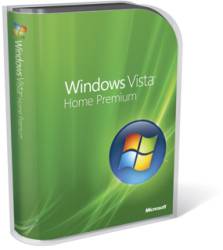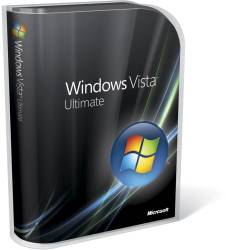- Qualcomm Launches Snapdragon 4 Gen 2 Mobile Platform
- AMD Launches Ryzen PRO 7000 Series Mobile & Desktop Platform
- Intel Launches Sleek Single-Slot Arc Pro A60 Workstation Graphics Card
- NVIDIA Announces Latest Ada Lovelace Additions: GeForce RTX 4060 Ti & RTX 4060
- Maxon Redshift With AMD Radeon GPU Rendering Support Now Available
Should you buy Vista Ultimate?

With the Vista launch imminent, you may be wondering what version you should be buying. Thanks to the four primary versions available, this is no easy task. Many will be swaying towards the Ultimate Edition, but should you save your cash?
Page 4 – Final Thoughts
|
|
As I mentioned on the first page, this article’s main goal was to compare the differences between Ultimate and Home Premium. As it stands, I still don’t believe Vista is a required upgrade by any stretch, but it’s a nice one if you want a fresh looking Windows with some notable and useful updates.
“Do I want Ultimate or Home Premium?” I hope this article helped finalize your decision. The most notable exclusives to Ultimate are the BitLocker hard drive encryption and also the advanced backup program. What I am going to do now is something that shouldn’t be quoted. If I were to split up these “extras”, this is how I would assume Microsoft values each application.
- Home Premium ($239) +
- BitLocker Encryption Software ($49) +
- Advanced Computer Backup ($49) +
- Business Applications ($29) +
- Ultimate Extras ($29) +
- Enlarged Ego Duty Fee ($4) =
- Ultimate ($399)
Again, please don’t quote me on the prices above. They are not endorsed by Microsoft but are my own assumptions. Truthfully, I believe all these “exclusives” are worth the value I chose. Although I didn’t have much luck with BitLocker, -if- you get it to work it would be well worth the price especially for businesses.
The advanced complete backup solution impressed me the most, however. After toying around with it for a few hours, covering a few things not mentioned in the article, I didn’t have a single issue. Unlike BitLocker, this was one application that was straight-forward and easy to understand and execute. Even if you have many Gigabytes of information to backup, the process is quite fast for both the saving and restoring.
I had fun completely screwing up my Windows XP installation. It really was to the point that it was unusable. Folders would not open and it would randomly lock up thanks to bad configurations, or lack of. But, the restore process put everything back as it was and the computer was completely usable again.

|
The main scenario I see from this is home users who want to have a good restore backup on hand in case their computer goes awry. The ideal situation would be to save all of your documents prior to a restore, then proceeding with the process. The complete backup solution is not going to replace your regular files backup, so you need to keep on top of it in case something bad does happen to your hard drive in the future. Backing all of your data up every two weeks is ideal, but you will always want to keep a good copy of your complete backup handy so that you can restore your PC to its original state quickly.
Although I didn’t test swapping out hardware to see how the restore would react, I don’t see it being a huge problem. I have booted up Vista with different hardware before and never had a problem. It was simply a matter of re-installing whatever drivers were needed and un-installing the defunct drivers for hardware that no longer existed. If any precautions were to be taken though, I would un-install your video drivers prior to a complete backup. The only BSOD I have dealt with in the Vista RTM was related to bad video drivers.
Backup aside, Ultimate also includes the extras that are yet to be seen but are on their way. These Extras -are- programs you are likely to make use of. There are third-party versions of some prospected software available, but the versions included in Ultimate are designed to work specifically with Vista and the Aero interface, like DreamScene for instance.

|
So, you still don’t know if you want Ultimate? Like I said, I am not a huge supporter of Vista although I firmly believe it’s the best version of Windows yet. My primary machine runs Linux and Vista doesn’t make me want to move back. However, it has become my main OS on my Windows specific machine and I haven’t run into any show stopping issues since installing the final release.
Consider this. Home Premium includes a -lot- of what you will want from Ultimate. For that extra $160, you are essentially paying for the better backup system and also BitLocker, which you may not even want to deal with due to complexity. The other applications are nice as well, but you may not see the benefits right away since it appears it will be a slow start.
One thing that Microsoft did right is that they allow people to upgrade their version of Vista at any time. All you do is pay the difference, not more. If you purchase Home Premium for $239 and wish to upgrade to Ultimate in the future, simply pay the extra $160 and you will have the full fledged version without feeling bad about wasting money on the original version you bought.
Don’t get me wrong however, I do believe that $400 for an OS is excessive. As it stands, each version does include a lot of software for the price though, so it’s not as though you will be completely ripped off. Me being a Linux user aside, Vista is not a complete ripoff. You will just have to ponder whether or not to save your $160 now and get Ultimate down the road, or avoid it entirely.
This is the first of a series of Vista specific articles that will be published all week long in preparation for the big launch. Stay tuned.
Jan 22, 07 Addendum: Brian Tebeau wrote in to explain another benefit to purchasing Ultimate. News.com reported last week that as a "limited time" offer, if you purchase Vista Ultimate you will gain the ability to purchase two Home Premium licenses for $50 each.
Michael Moody also writes, “You mention that tpm is a function of the bios, when in fact it’s not. TPM is an actual chip that is also on certain motherboards, and adds a level of security. It has the ability to store various pieces of data, and can even work to encrypt hard drives as well. (For instance, take a look at the Precision M65 from dell, the tpm allows the fingerprint reader to log you on to windows as well and at the BIOS screen, all with one swipe). It’s very similar to a smart card. “
|
|
Support our efforts! With ad revenue at an all-time low for written websites, we're relying more than ever on reader support to help us continue putting so much effort into this type of content. You can support us by becoming a Patron, or by using our Amazon shopping affiliate links listed through our articles. Thanks for your support!





